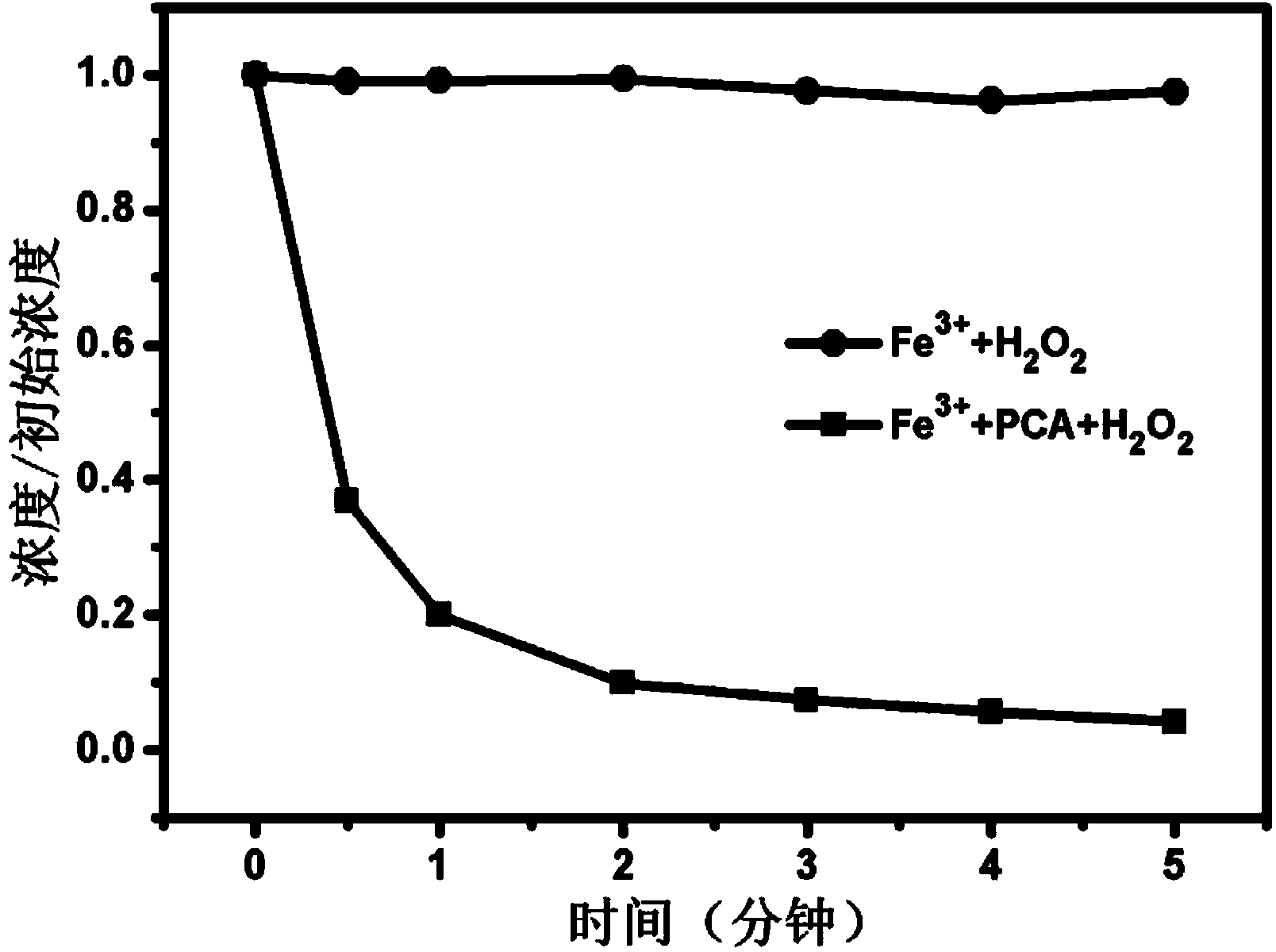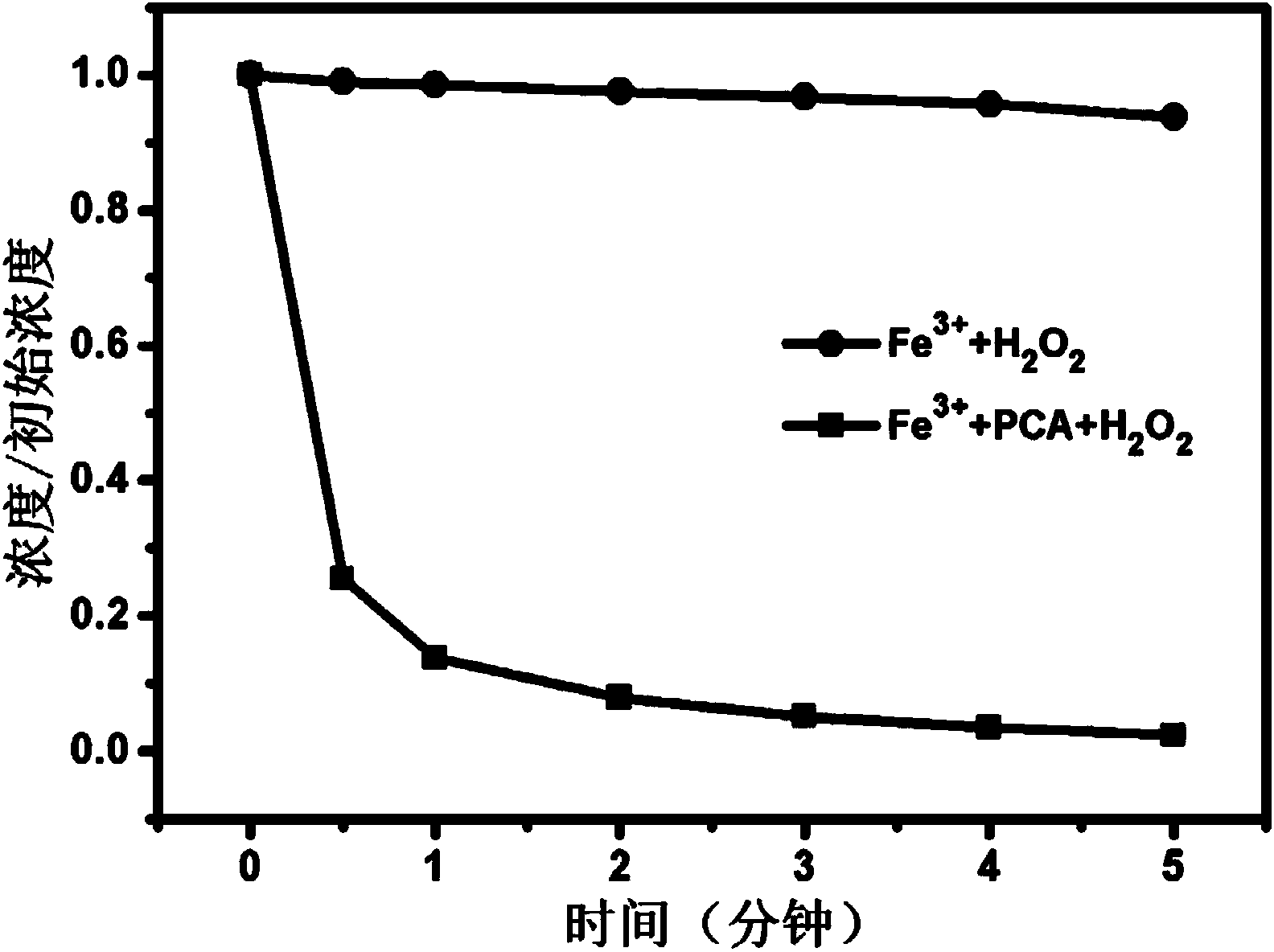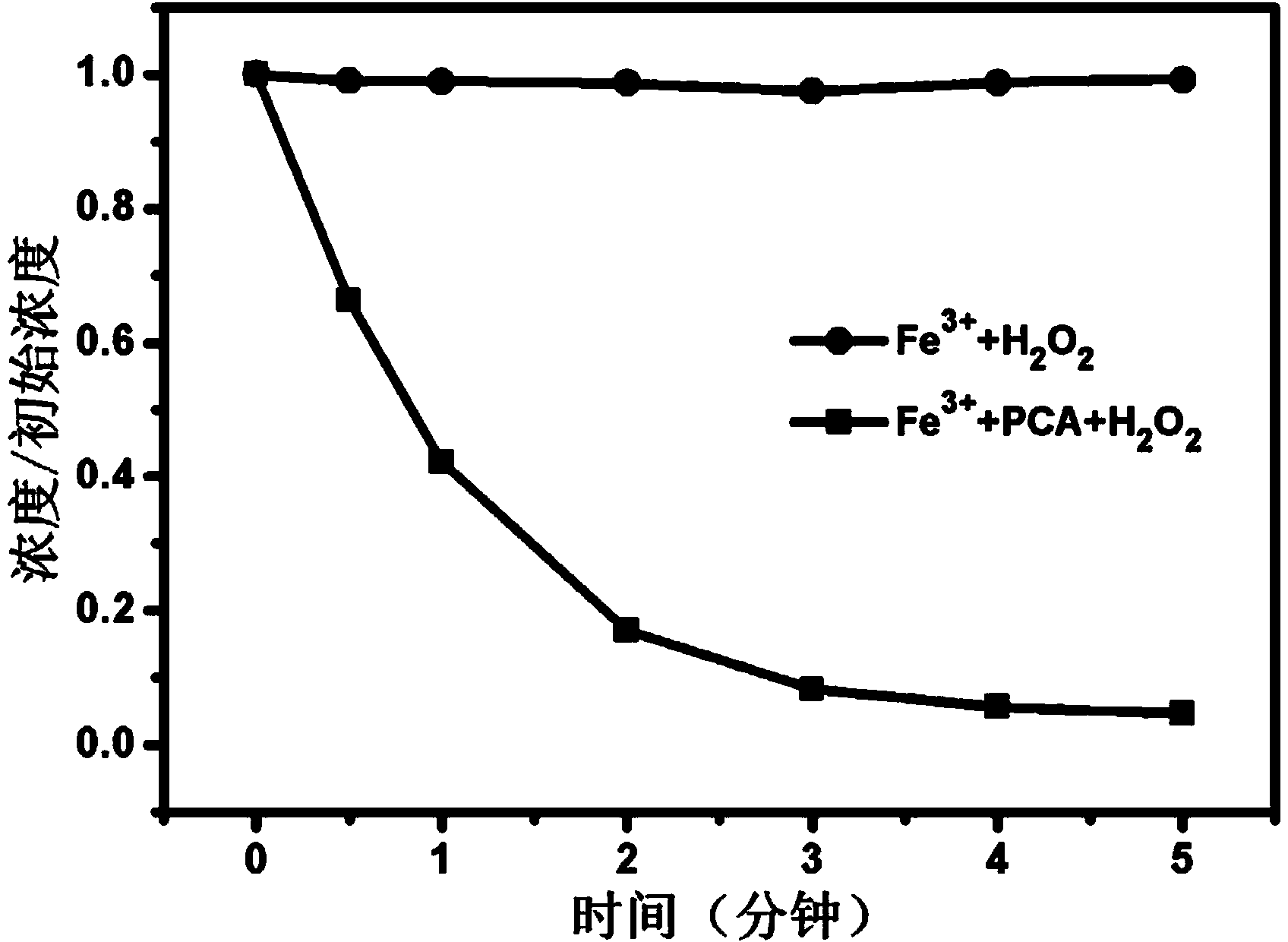Method for promoting Fe(III)/H2O2 system to repair organism polluted water by utilizing protocatechuic acid
A protocatechuic acid and H2O2 technology, applied in the field of environmental chemistry, can solve the problems of difficult circulation and easy precipitation, and achieve the effects of no danger, simple operation, and improved degradation rate.
- Summary
- Abstract
- Description
- Claims
- Application Information
AI Technical Summary
Problems solved by technology
Method used
Image
Examples
Embodiment 1
[0028] Example 1 Treatment of Sewage Containing Rhodamine B
[0029] For the remediation of dye-contaminated water sources, rhodamine B aqueous solution with a concentration of 10 mg / L was used as the simulated wastewater. Take 20 mL of simulated wastewater, add protocatechuic acid, Fe 3+ Substances Ferric nitrate nonahydrate and H 2 o 2 , so that the concentrations were 0.1, 0.1 and 8 mmol / L, adding protocatechuic acid and Fe 3+ The initial pH value of the system after the substance is 3.2, and there is no need to adjust the pH additionally, and the solution is mixed evenly by stirring with a magnetic stirrer, and the rotation speed is 400 rpm. At the same time, no addition of protocatechuic acid was used as a control test, and the results are shown in figure 1 . figure 1 It was shown that the degradation rate of rhodamine B reached 60% after 0.5 min of reaction; when the reaction was extended to 5 min, the degradation rate of rhodamine B reached 96%.
Embodiment 2
[0030] Example 2 Treatment of Sewage Containing Atrazine
[0031] For the remediation of pesticide-contaminated water sources, atrazine aqueous solution with a concentration of 5 mg / L was used as the simulated wastewater. Take 20 mL of simulated wastewater, add protocatechuic acid, Fe 3+ Substances Ferric nitrate hexahydrate and H 2 o 2 , so that the concentrations were 0.4, 0.4 and 4 mmol / L, adding protocatechuic acid and Fe 3+ After the substance, the initial pH value of the system is 3.3, and there is no need to adjust the pH additionally, and the solution is mixed evenly by stirring with a magnetic stirrer. At the same time, no addition of protocatechuic acid was used as a control test, and the results are shown in figure 2 . figure 2 It was shown that the degradation rate of atrazine reached 75% after 0.5 min of reaction; when the reaction was extended to 5 min, the degradation rate of atrazine reached 98%.
Embodiment 3
[0032] Example 3 Treatment of Sewage Containing 4-Chlorophenol
[0033] For the remediation of pesticide-contaminated water sources, 4-chlorophenol aqueous solution with a concentration of 5 mg / L was used as the simulated wastewater. Take 20 mL of simulated wastewater, add protocatechuic acid, Fe 3+ Substances Iron Sulfate and H 2 o 2 , so that the concentrations were 0.1, 0.1 and 6 mmol / L, adding protocatechuic acid and Fe 3+ After the substance, the initial pH value of the system was 3.5, and there was no need to adjust the pH additionally. The solution was stirred with a magnetic stirrer to mix the solution evenly, and the rotation speed was 400 rpm. At the same time, no addition of protocatechuic acid was used as a control test, and the results are shown in image 3 . image 3 It was shown that the degradation rate of 4-chlorophenol reached 34% after 0.5 min of reaction; when the reaction was extended to 5 min, the degradation rate of 4-chlorophenol reached 97%.
PUM
 Login to View More
Login to View More Abstract
Description
Claims
Application Information
 Login to View More
Login to View More - R&D
- Intellectual Property
- Life Sciences
- Materials
- Tech Scout
- Unparalleled Data Quality
- Higher Quality Content
- 60% Fewer Hallucinations
Browse by: Latest US Patents, China's latest patents, Technical Efficacy Thesaurus, Application Domain, Technology Topic, Popular Technical Reports.
© 2025 PatSnap. All rights reserved.Legal|Privacy policy|Modern Slavery Act Transparency Statement|Sitemap|About US| Contact US: help@patsnap.com



